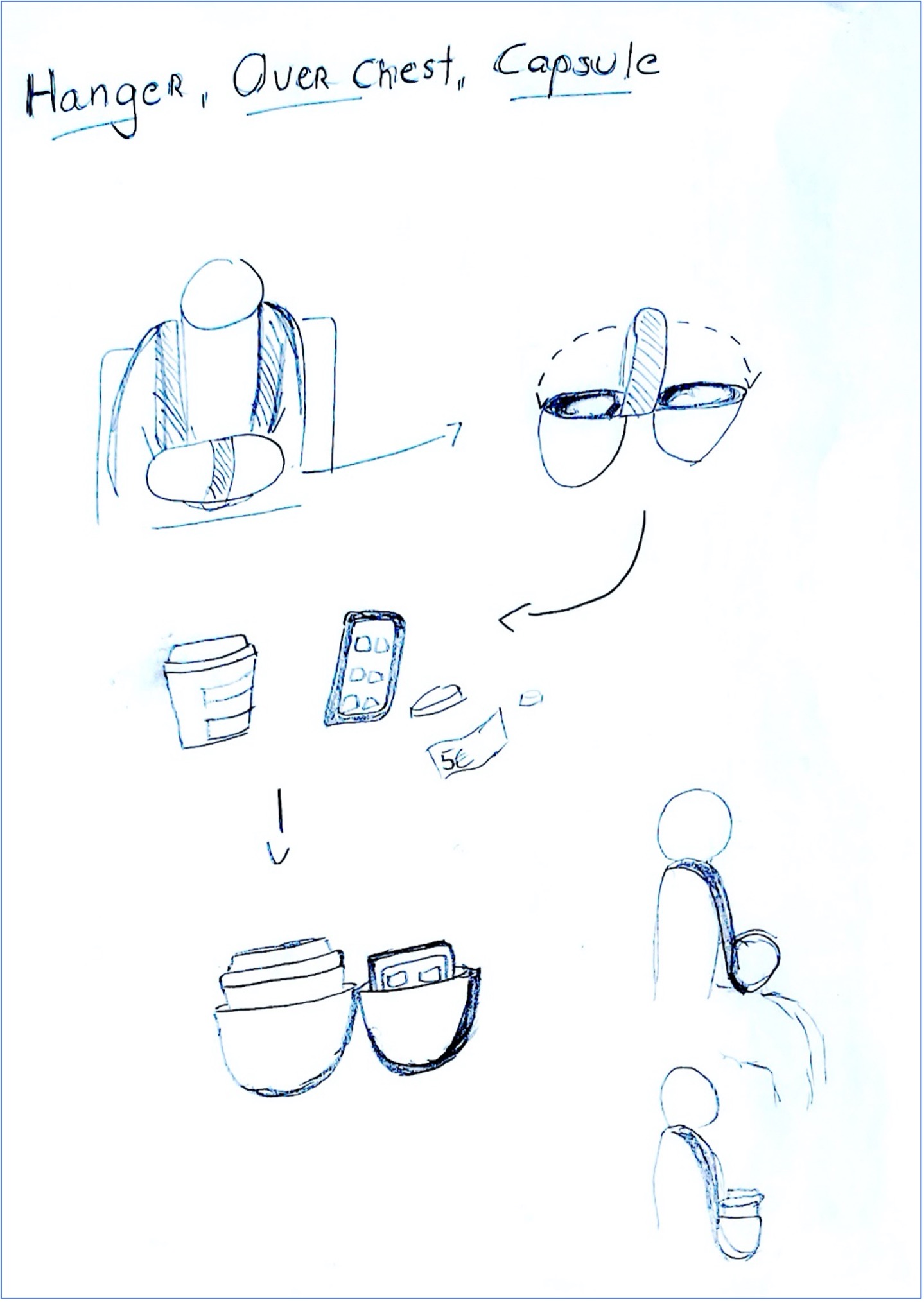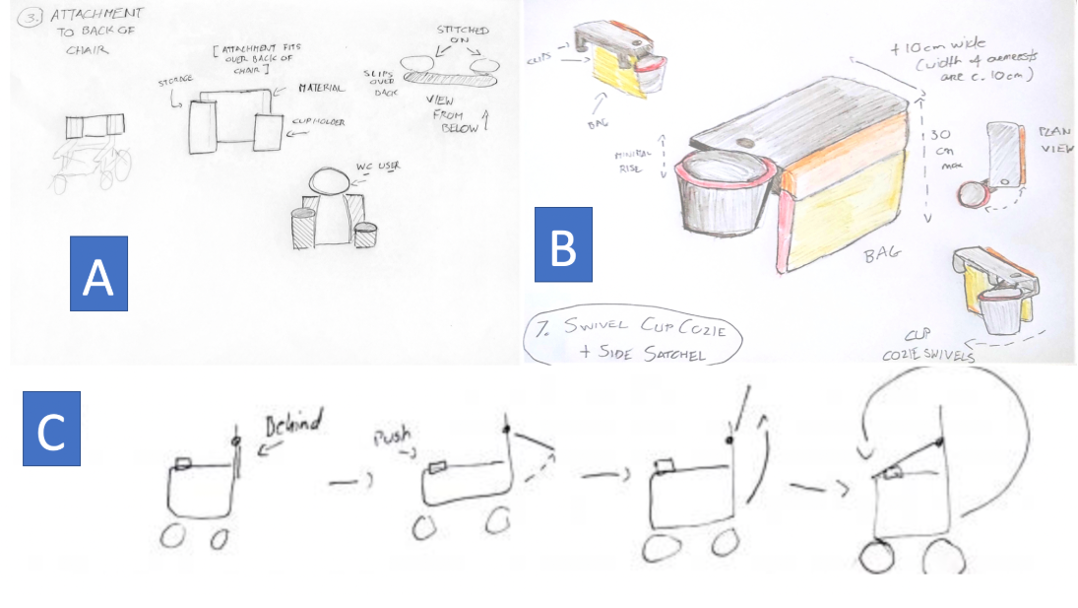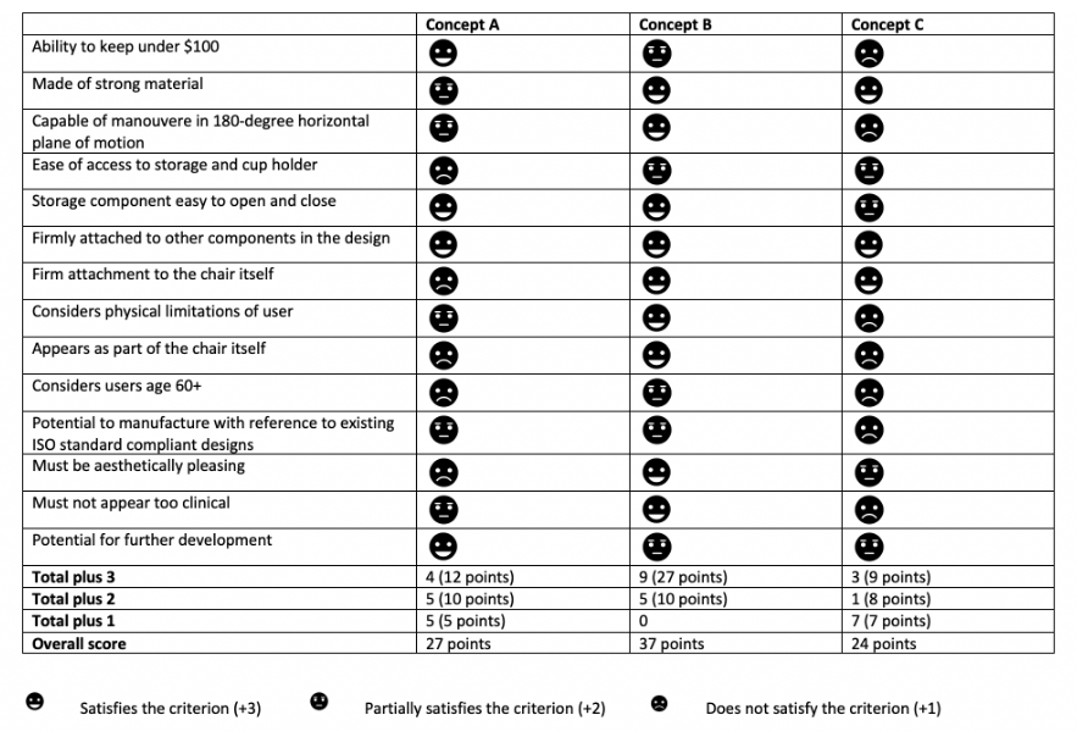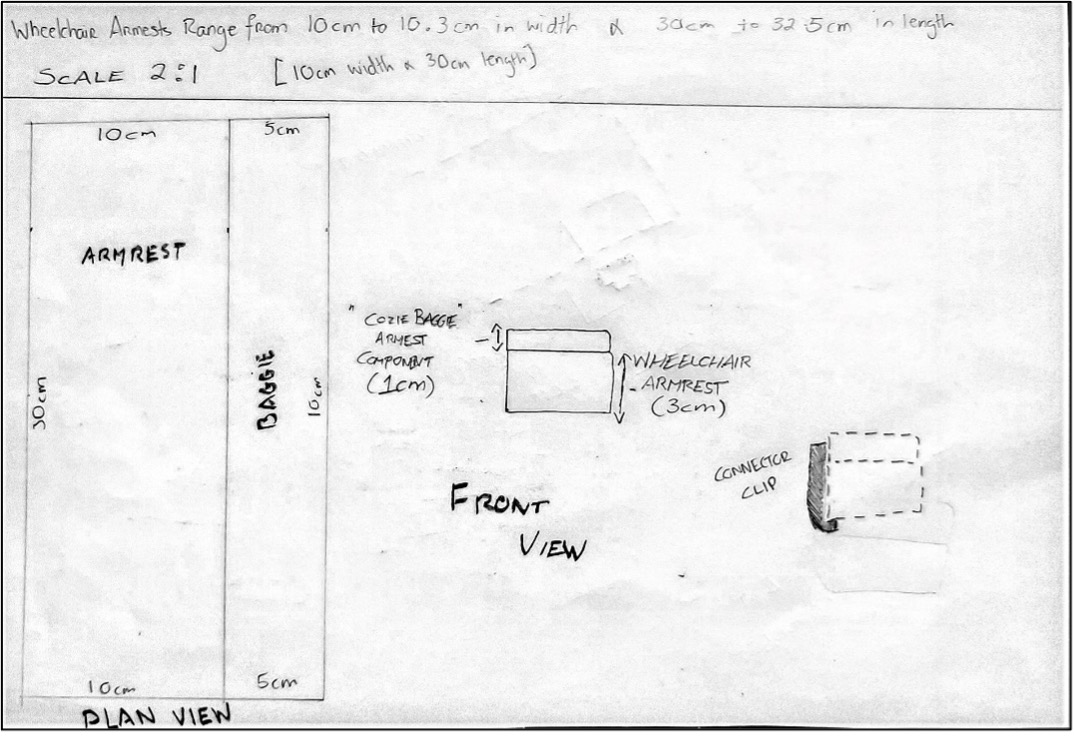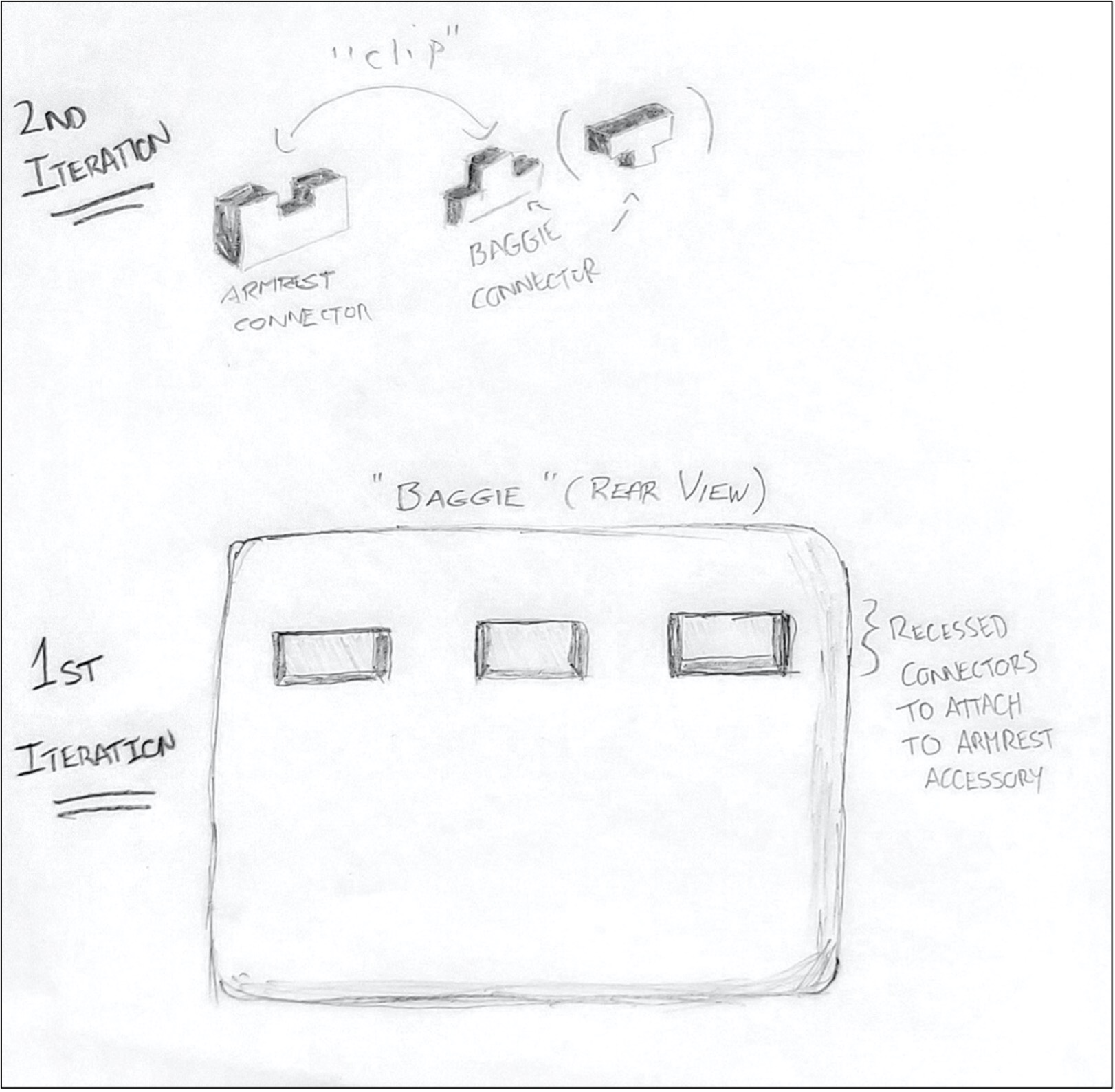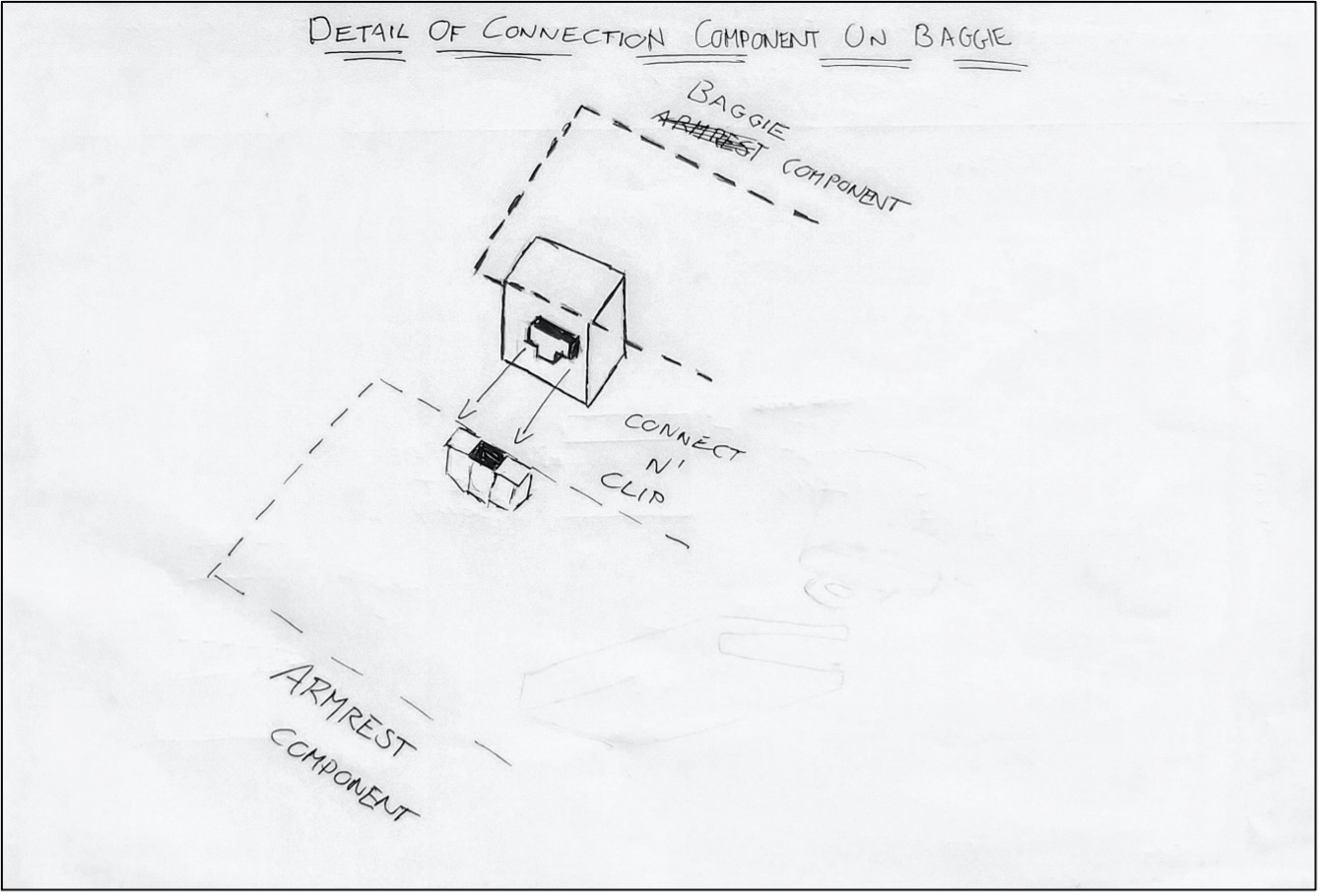Part 1: Research towards a Design Brief
Gathering Information
The global wheelchair market is lucrative, expected to be worth in excess of 9.5 billion USD by 2024, an increase of 2.8% based on 2018 numbers. The global market for electric wheelchairs is reported to be highly competitive, forecasted to be worth 4.48 billion by the end of 2020, with North America being the dominant region. Research suggests that the largest group of users in this bracket are those with full control or at least satisfactory functional mobility in their hands and arms. Europe is also attractive as population age continues to increase due to increased life expectancy as post-war baby-boom generation reaches retirement age.

I spoke with some wheelchair users on the topic of travel accessories. They commented on how the coffee cup holder has become pervasive in society, from cars to couches to bicycles, and yet there is a lack of well-designed coffee-cup holders that attach firmly to their chairs and hold the cup securely. They also mentioned how they felt vulnerable putting their bag over the back of the chair as it afforded the opportunity of being stolen. I was also fortunate to spend an hour with a friend and her father who is a wheelchair user. He requires some additional padding behind him so he can sit up straight, but this means he cannot reach behind him as easily due to the increase in distance. His words were “I would love a man-bag beside me.”

Similarly, one individual mentioned the difficulty she had when attempting to negotiate kerbs and cobbled streets while maintaining control of her daily coffee without it spilling and sometimes burning her legs. The current state of the art of existing designs exposes some of these dangers.
Thus, there is scope for development of a new product that may remedy these issues, by combining both products into one design that is robust, attractive, functional and affordable. Everyone should be afforded the basic luxury to buy their own takeaway drinks from their local coffee shop and safely travel around their place of living, while enjoying their hot beverage and not worrying about the cup spilling out or their personal belongings being stolen.

User Research
I chose two methods to conduct my user research - interviewing those who are the intended primary user group for my product type. & also using Google Forms to conduct a survey with some basic questions to attempt to understand some more about their needs, wants, goals and motivations.
Interviews
My first interviewee was a friend named Jo from Scotland. Jo works as a charity administrator. She is in her 40s and enjoys Ska music. Jo uses a powered wheelchair to travel around Glasgow. She commented that she found it difficult to find a cup holder that suited her needs as she was quite mobile and liked to sometimes bring her coffee with her if she didn't finish it while meeting friends for lunch. She also recounted how at times it was difficult to negotiate up and down paths, kerbs and cobbled streets without spilling her drink. Jo also felt vulnerable placing her bag over the back of her chair and risking it "being pinched". If she brings a handbag, she rests it on her stomach while moving but it sometimes falls off, especially if it doesn't have a long arm strap.

Secondly, I interviewed Jack, a student in the vocational educational programme with a local charity organisation. Jack also uses a power chair. He has limited vocabulary & restricted reach in his arms but was still able to have a good conversation with me. Jack carries his bag on the back of his chair and receives assistance from his tutors to remove items and put them back. Because of Jack's limited mobility I thought it might be difficult for him to reach for a static cup holder if it was positioned on the front tubing on his chair. However, his tutor mentioned that if it was on a machine-like arm that could be manipulated into an appropriate position, it may serve as motivation for Jack to reach for the item, thereby equating to a facility for positive reinforcement.

Survey
A survey was conducted using the Google Forms application. I requested responses on Twitter and via WhatsApp. Six responses were received in total. The questions asked were formed with reference to the original conversation I had with Jo. Most respondents indicated that they carry some sort of bag with them when commuting and travelling. Unfortunately, some of the questions did not receive a 100% answer rate, but some commented on feeling vulnerable with their bag on the back of the chair. Only a small percentage had a cup holder but the appetite for a possible new innovative product, comprised of both products was apparent.

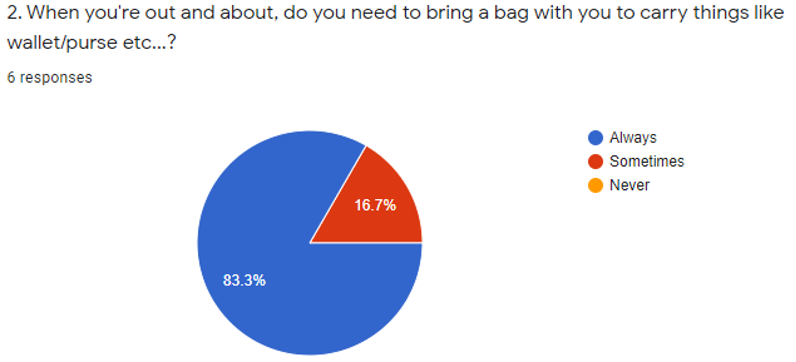

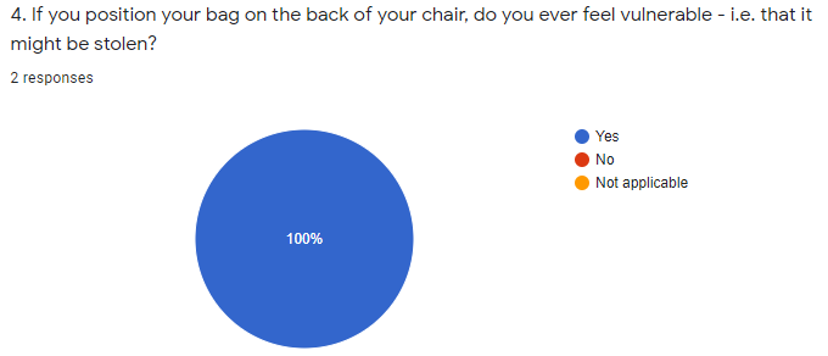
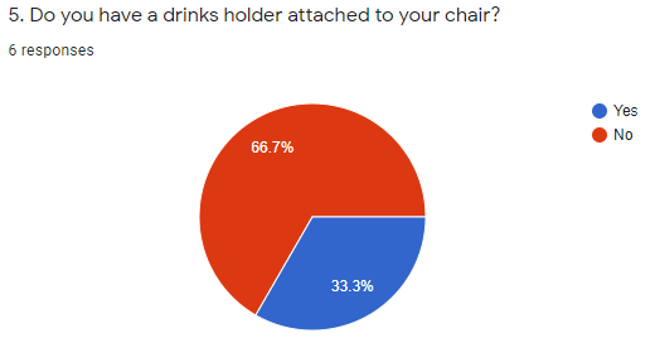


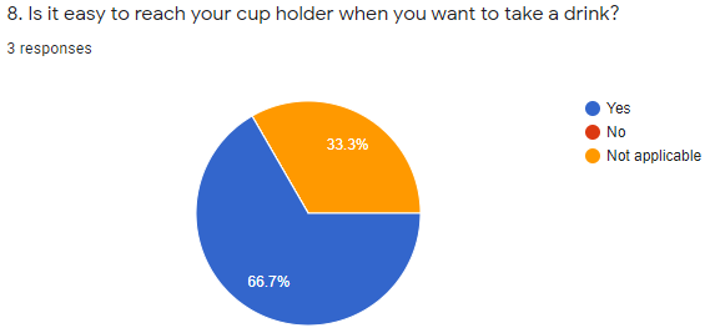
Summary of results
Wheelchair users require bags to carry their belongings with them while commuting, heading to work or shopping. Some of the people surveyed indicated their discomfort with positioning the bag on the back of their chair for fear of theft. There may be opportunities here to either create some security feature to secure the bag more firmly, a permanent satchel-type bag permanently attached to the chair.
The cup holder does not appear to be as popular – one respondent commenting that he just positions his camelback beside him in his chair or bag. However, there may also be scope for development an extendable cup holder that extrudes from the armrest and can be manoeuvred into position – an occupational therapy aid of sorts for a sub-group of users. The fact that existing holders do not always retain control of the cup also suggests a gripping mechanism within the holder could be included. There are also legal constraints to consider, especially in Europe where several ISO standards apply.
User Profile: Powered-Wheelchair Users
| Age | 12-25 | 26-60 | 61+ |
|---|---|---|---|
| Physical limitations | May be a full-time wheelchair user or may only require its use at times. May also have cognitive impairment and limited use of arms and hands. | May be a full-time wheelchair user or may only require its use at times. May also have cognitive impairment and limited use of arms and hands. | May be a full-time wheelchair user or may only require its use at times. May also have cognitive impairment and limited use of arms and hands. |
| Educational background | May be part of mainstream education or other type of school. May also be university educated. | May be highly educated or possess minimal educational qualifications. | May be highly educated or possess minimal educational qualifications. |
| Motivation | May be very motivated to use a travel accessory, but potentially not if possess limited grip strength & reach | May be very motivated to use a travel accessory, but potentially not if possess limited grip strength & reach | Might be interested in this product if it is easy to use – may be set in their ways |
| Attitude | May have a positive attitude depending on the range of designs available. Opinions may be swayed by peers/family. | May have a positive attitude depending on the range of designs available. Opinions may be swayed by peers/family. | Attitudes to use may vary depending on cost and mobility habits. |
I focused on the 25 to 60 age category.
- Groups were identified to be more mobile and active in the world of work than the other categories.
- The working / studying / commuting wheelchair user fit well into the scenarios I have considered to this point
- The potential increasing market size was attractive
User Persona

NAME: Mike
PERSONAL DETAILS: 45 years old; lives in Dublin
JOB: Computer Systems Engineer
INCOME: €68,000 p.a.
EDUCATION: BSc Computer Science; MSc Computer Forensics
MARITAL STATUS & FAMILY: Married w. 2 children: Kate (13) & Samantha (19)
FAVOURITE PLACES: Anfield, Howth Village, Connemara
ENJOYS: Family outings with his wife and kids, watching sport, reading spy novels, listening to music and volunteering with the local sports club
FAVOURITE POSSESSIONS: His MacBook Pro, family albums, his music collection
FRUSTRATIONS: People feeling sorry for him. How parts of the city are inaccessible to him due to bad forethought in physical design. How he never seems to have any spare change due to the younger women in his life being on the internet all the time.
GOALS: To get his girls through college. To see Liverpool win the league
PURCHASING BEHAVIOUR: A lover of all things tech and well-designed products. Happy to fork out a few bob for something that is well-made.
PHYSICAL LIMITATIONS: Does not let his disability define him, wishes others would due the same. Due to his motor-impairment he uses an alternative keyboard for data entry while working. Mobility-wise, his wife drives a wheelchair accessible van.


